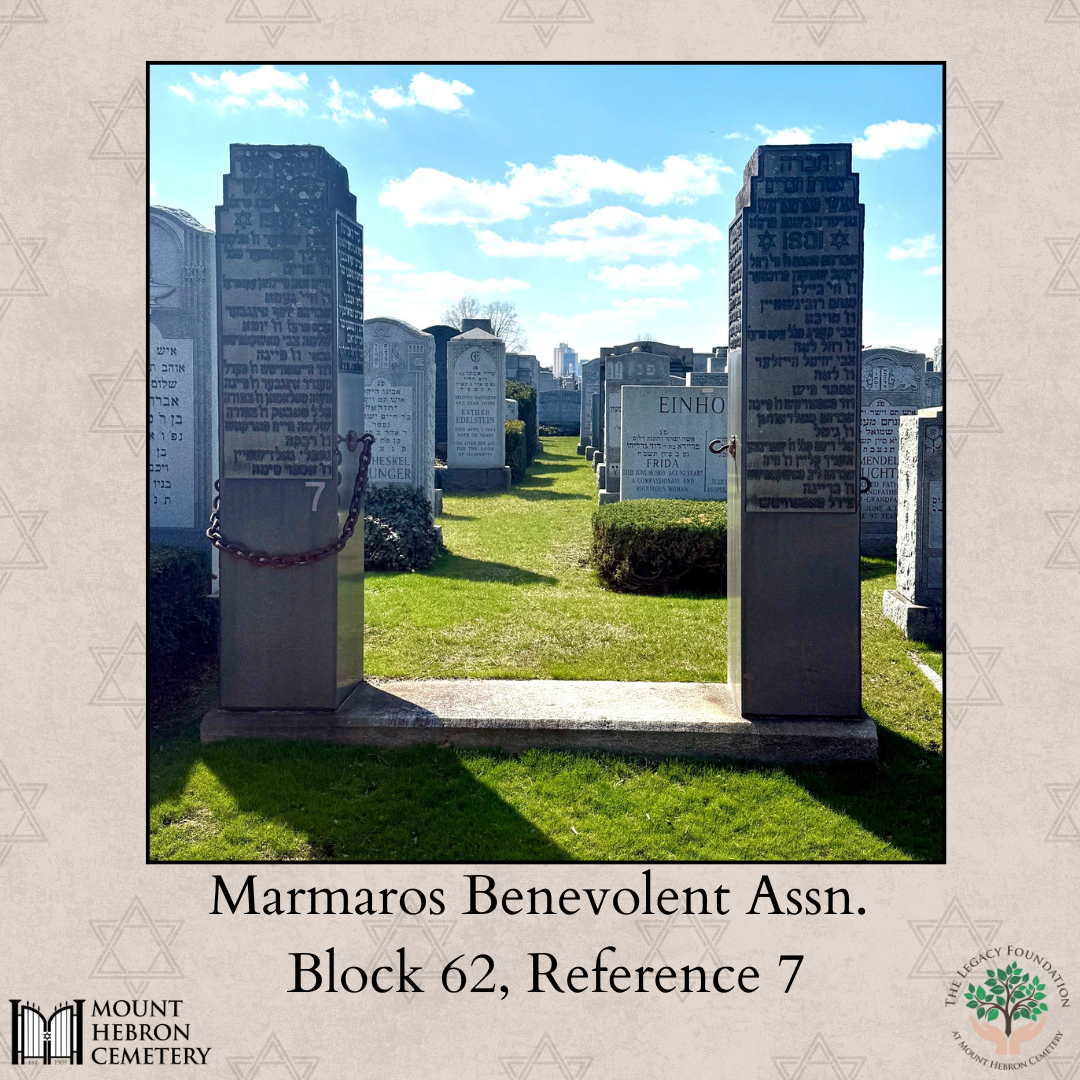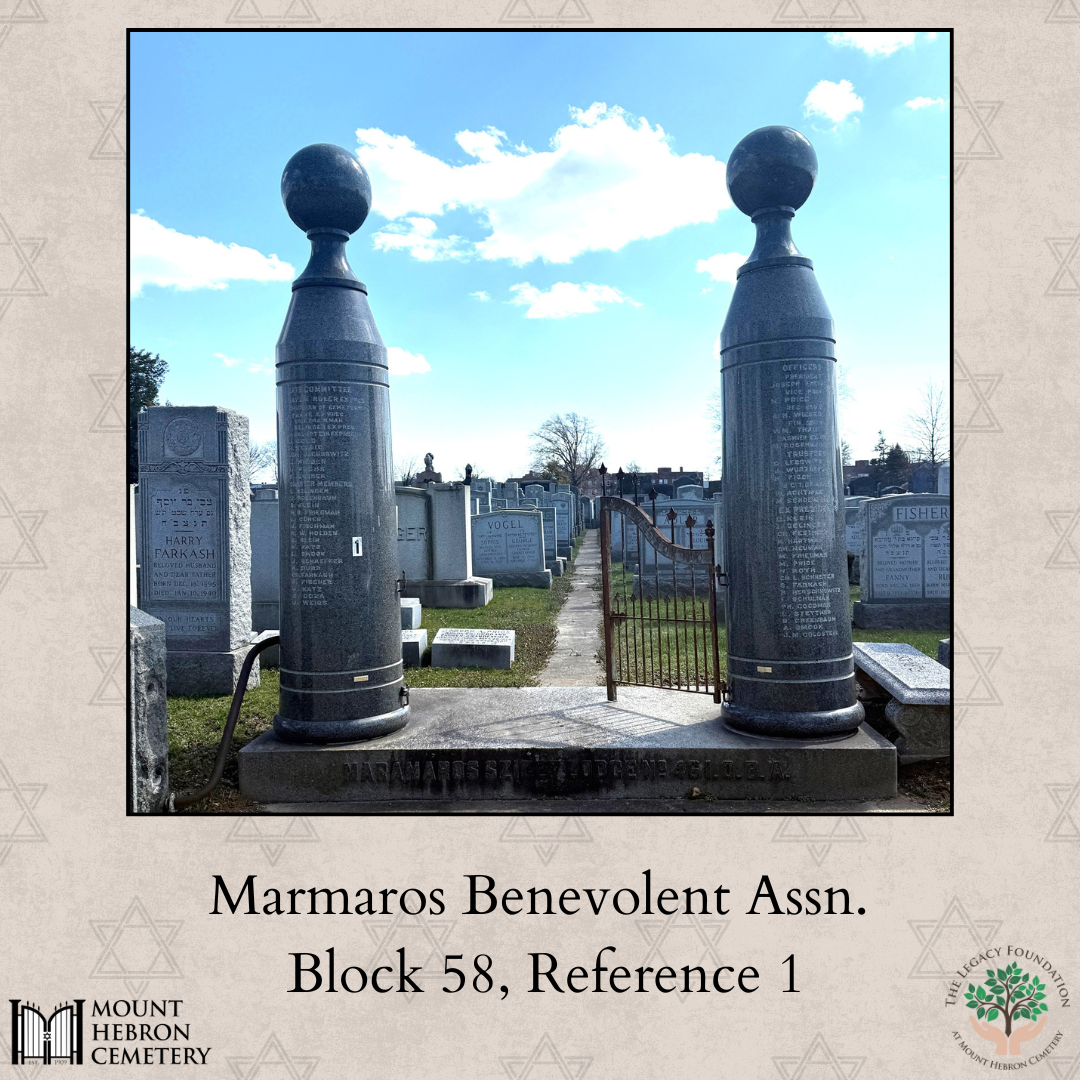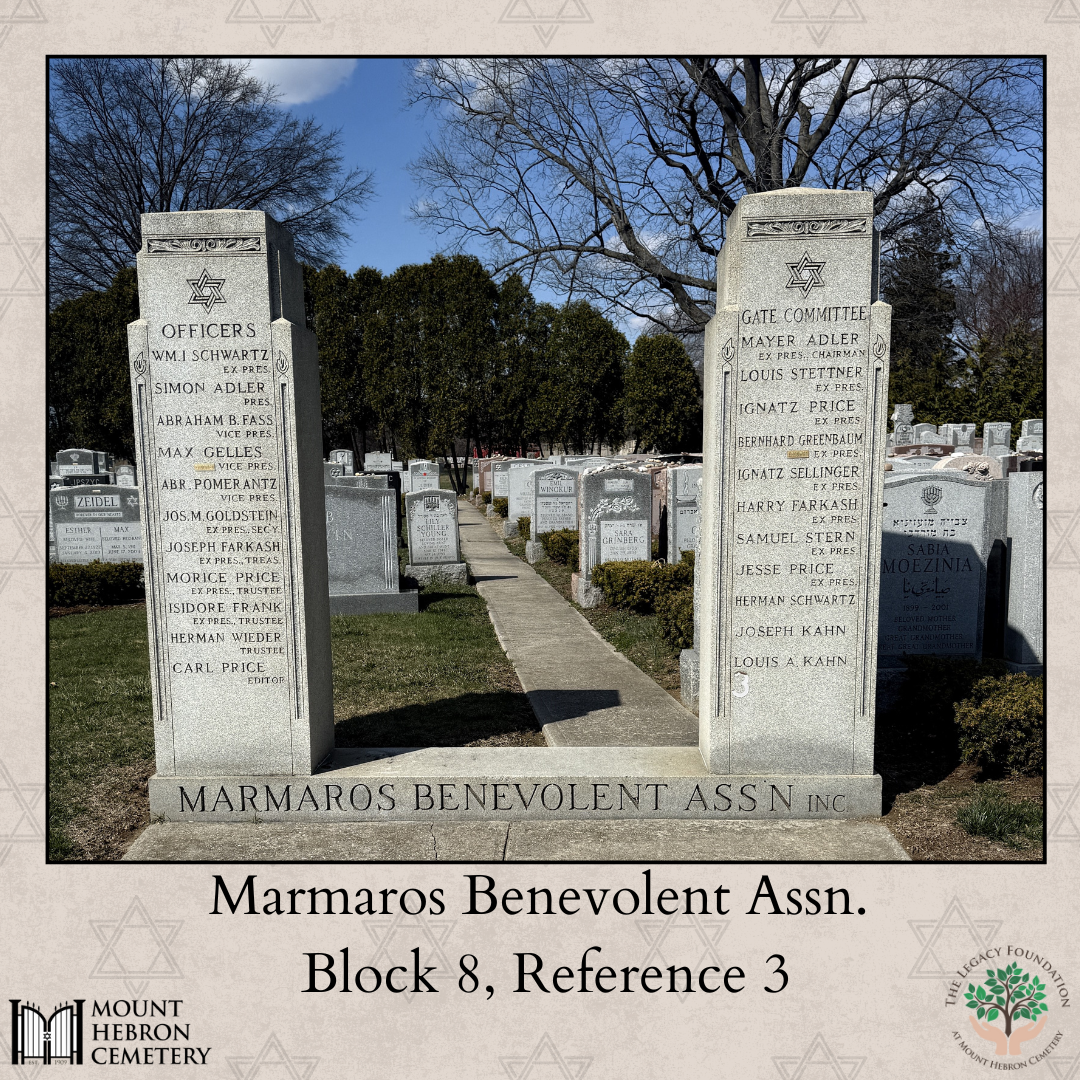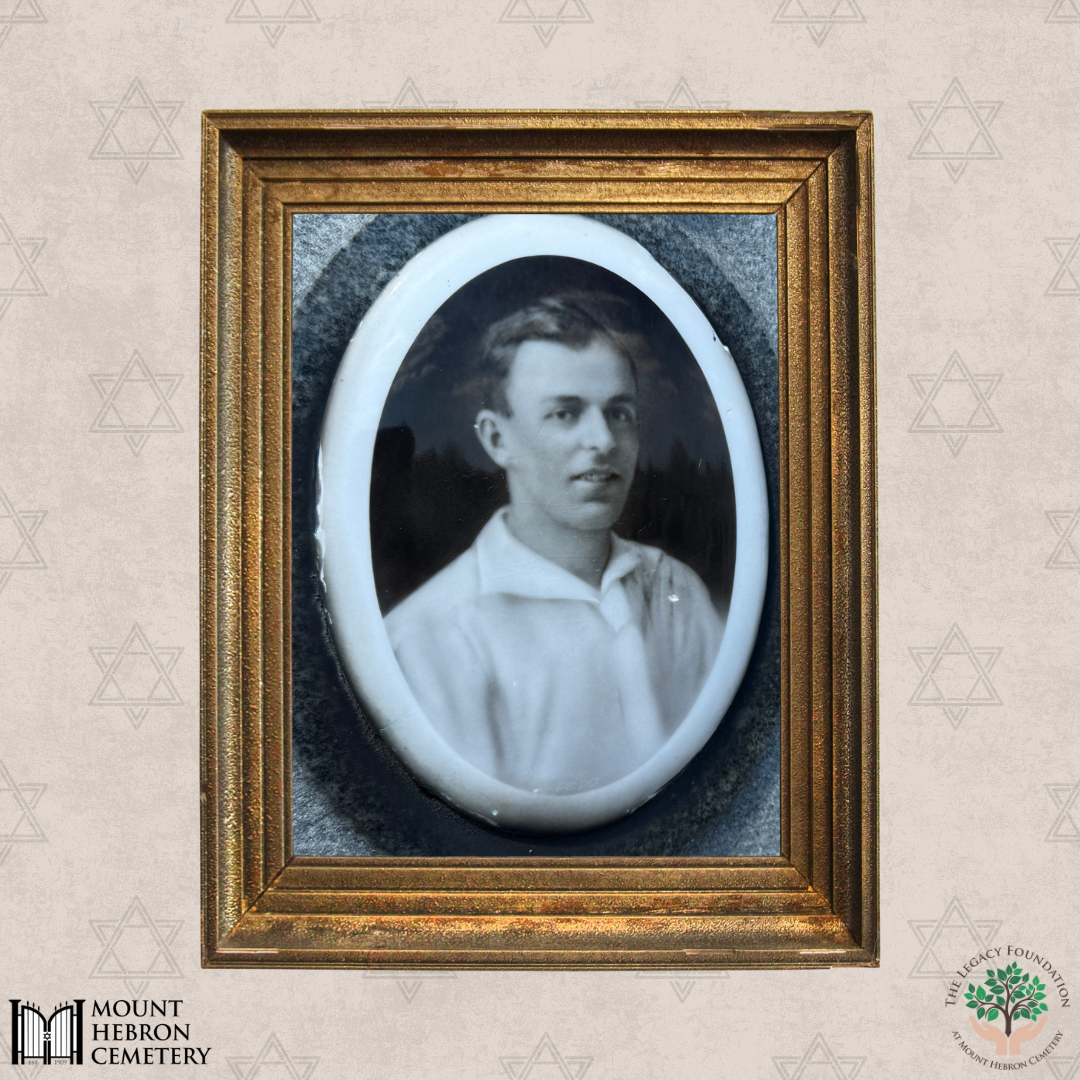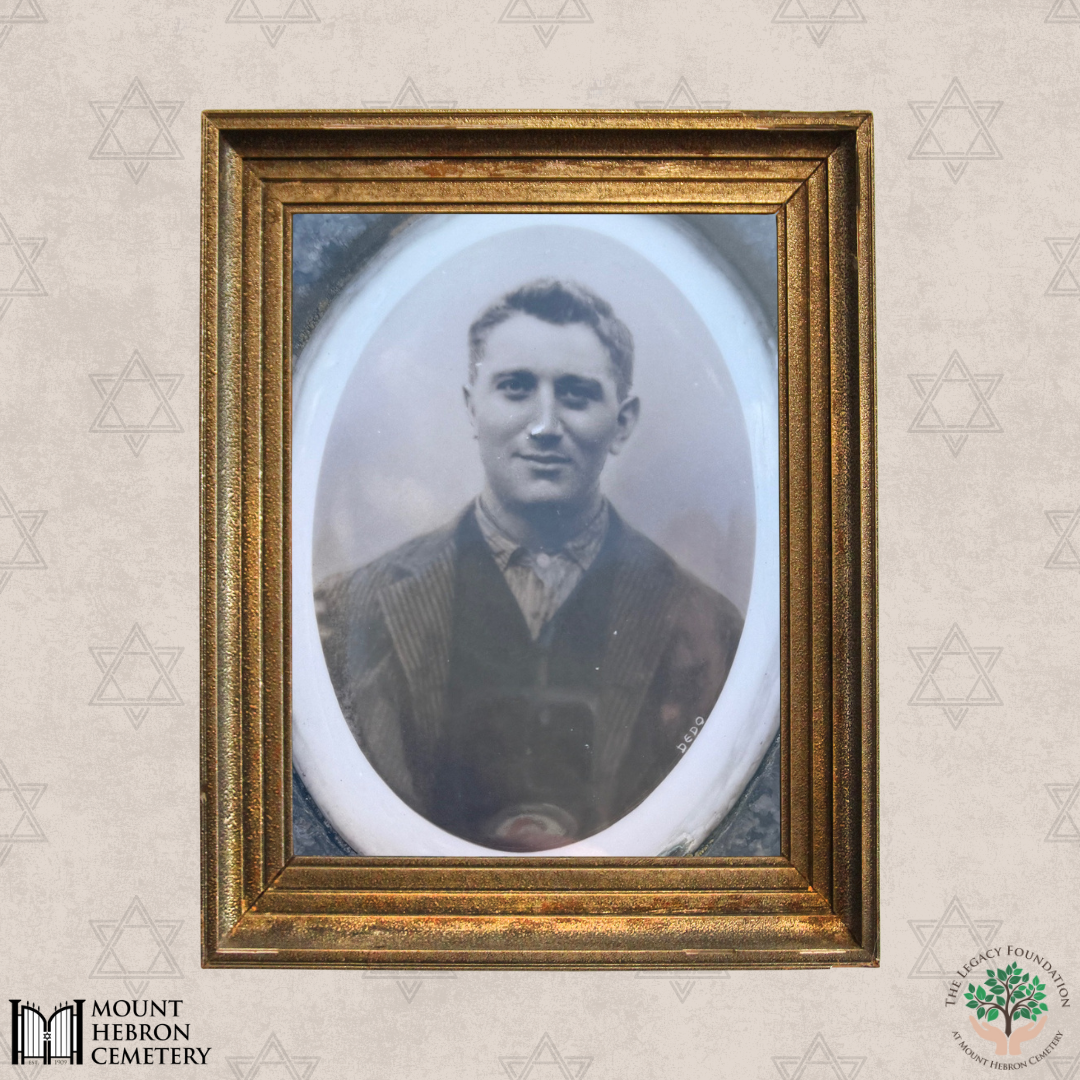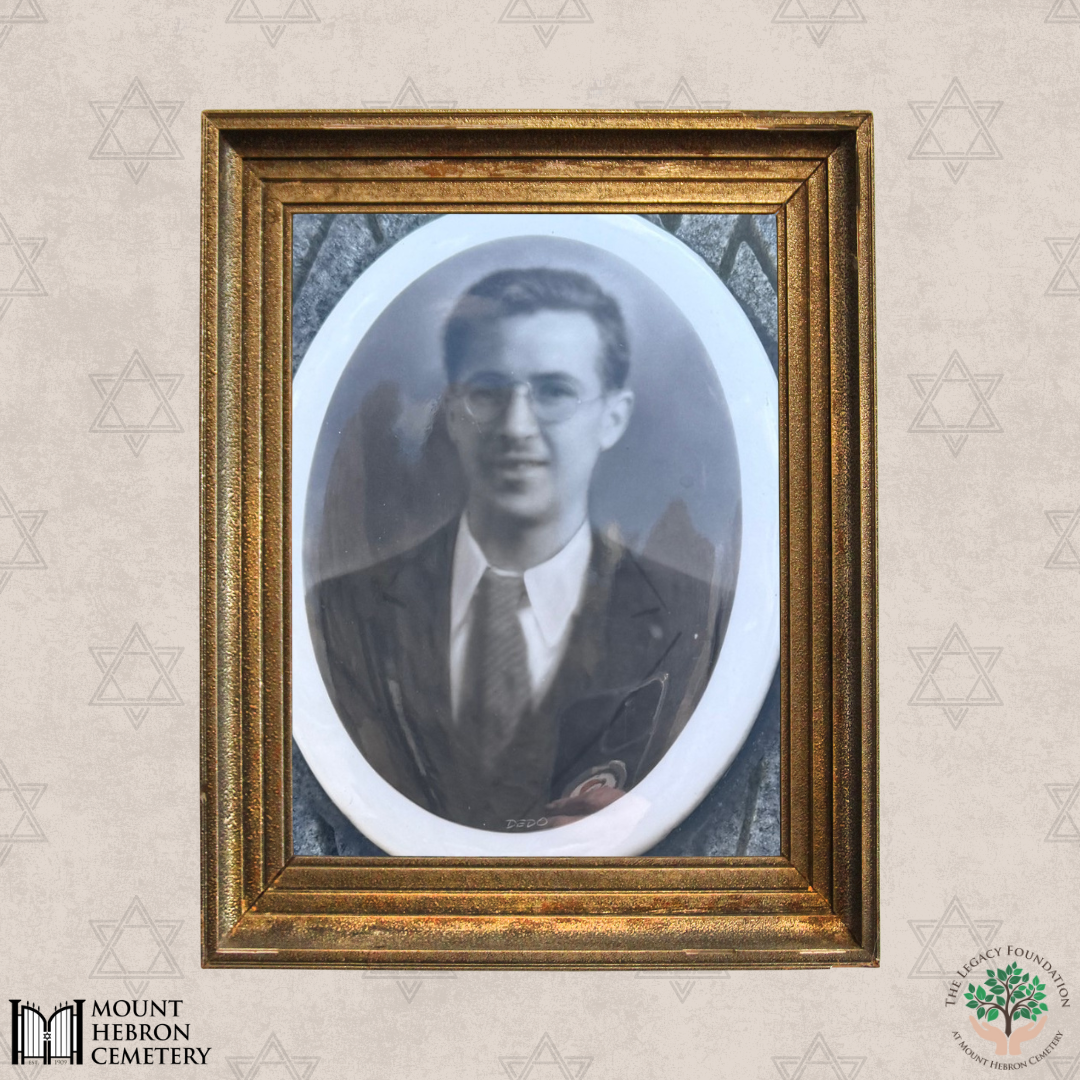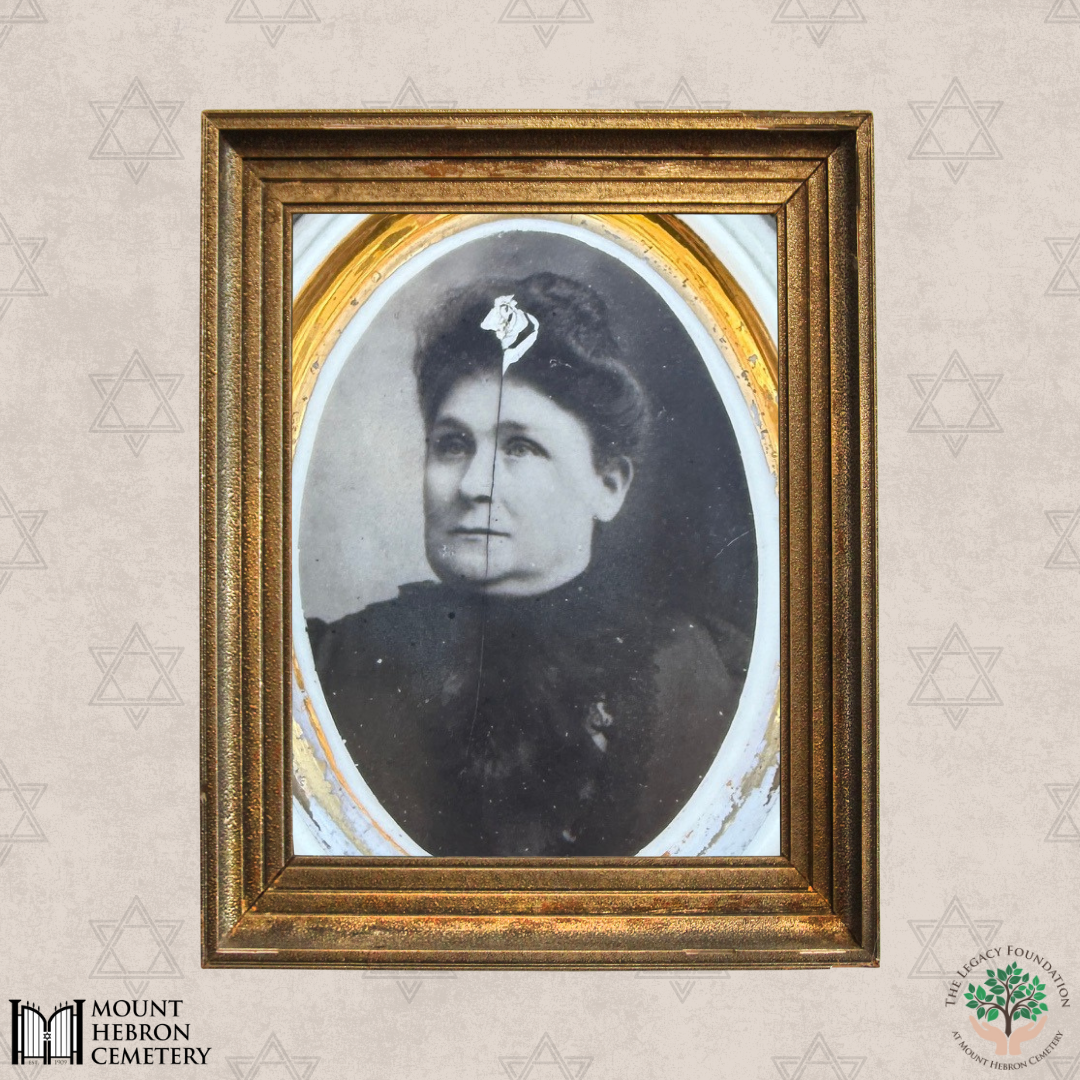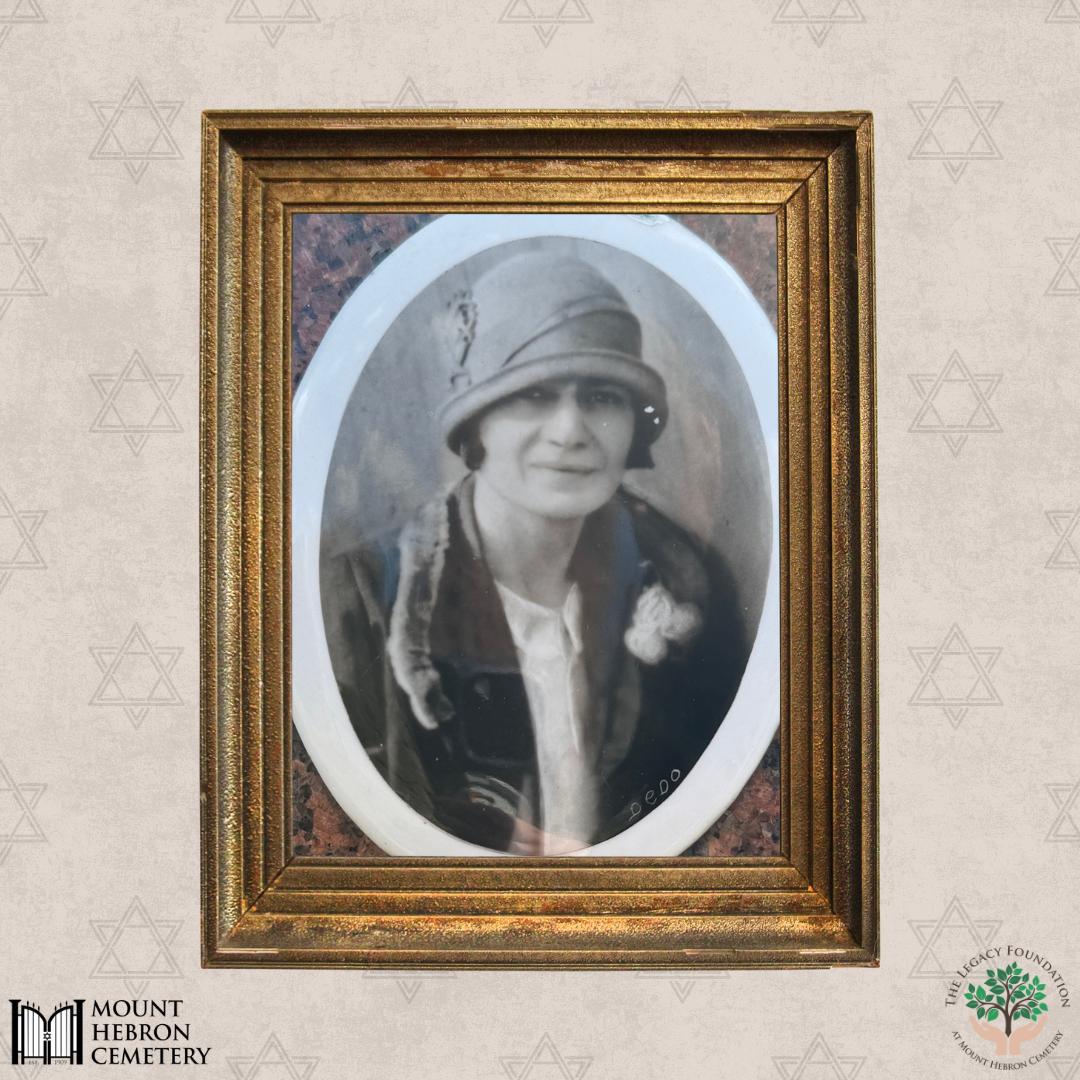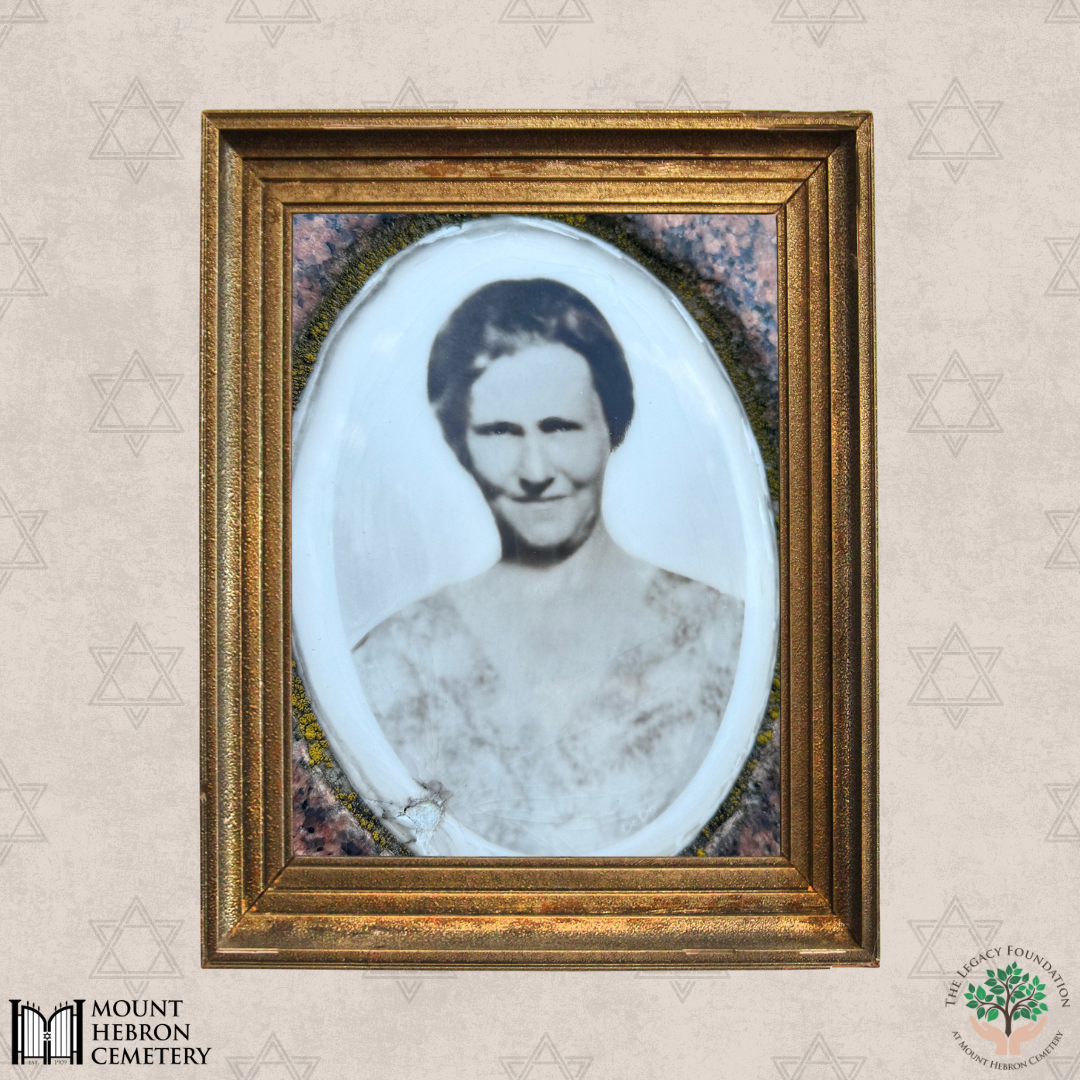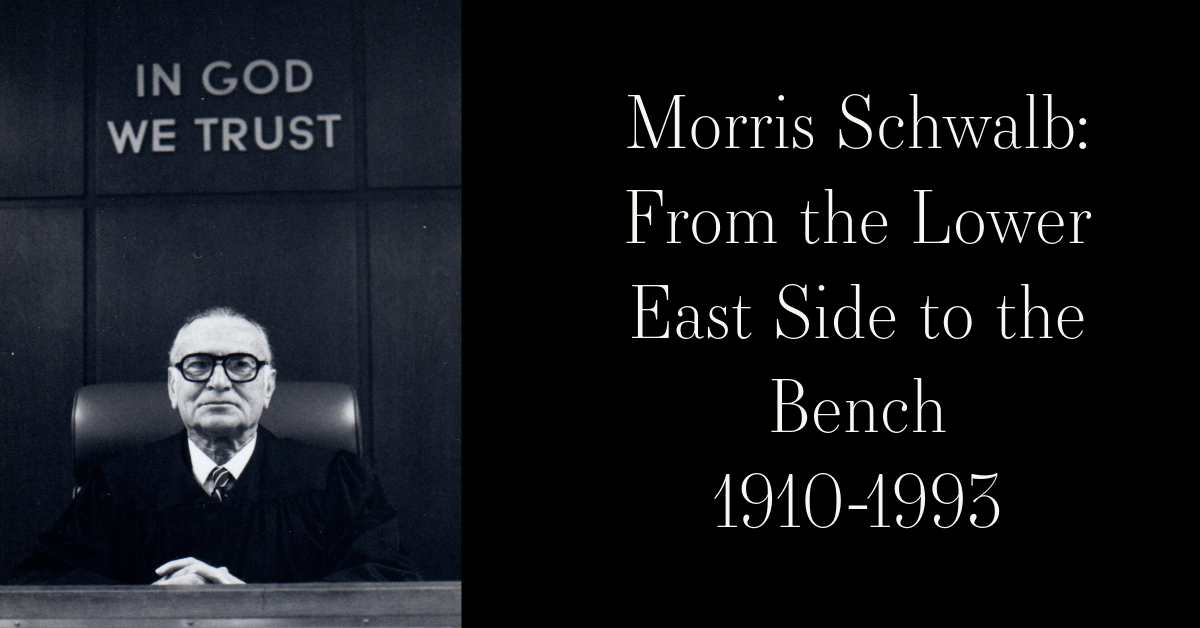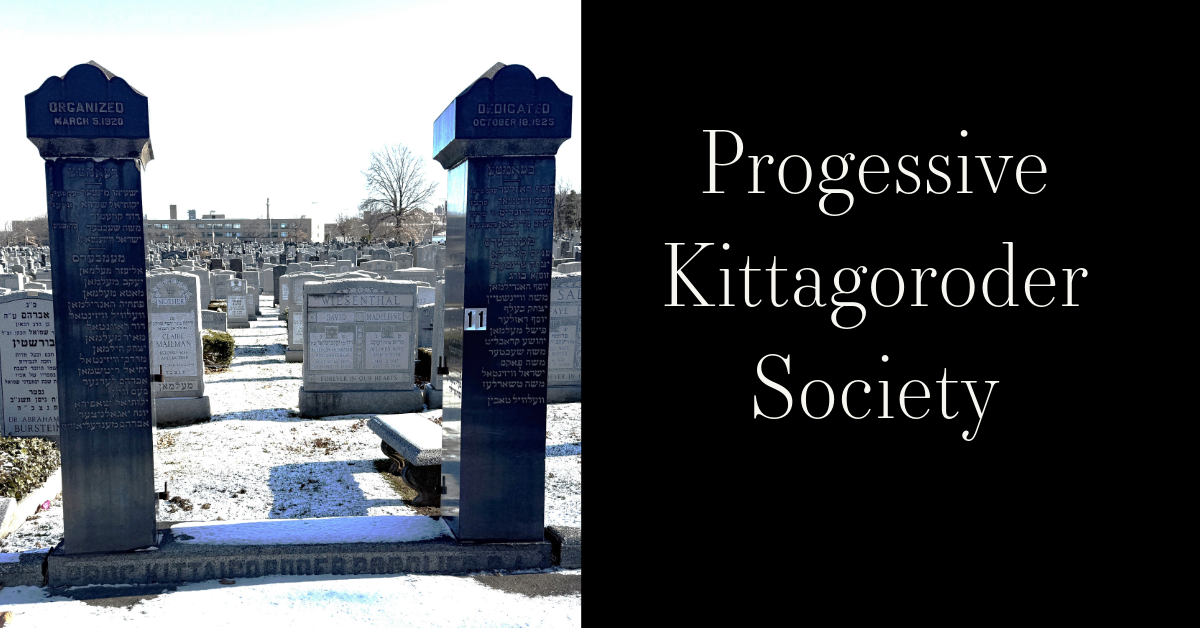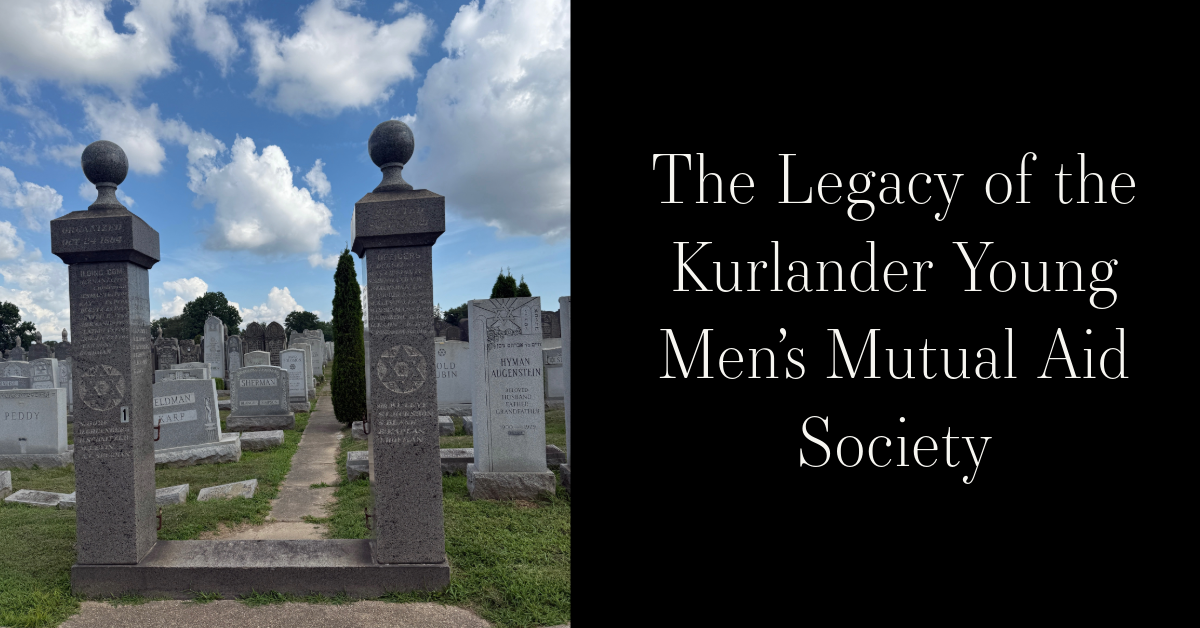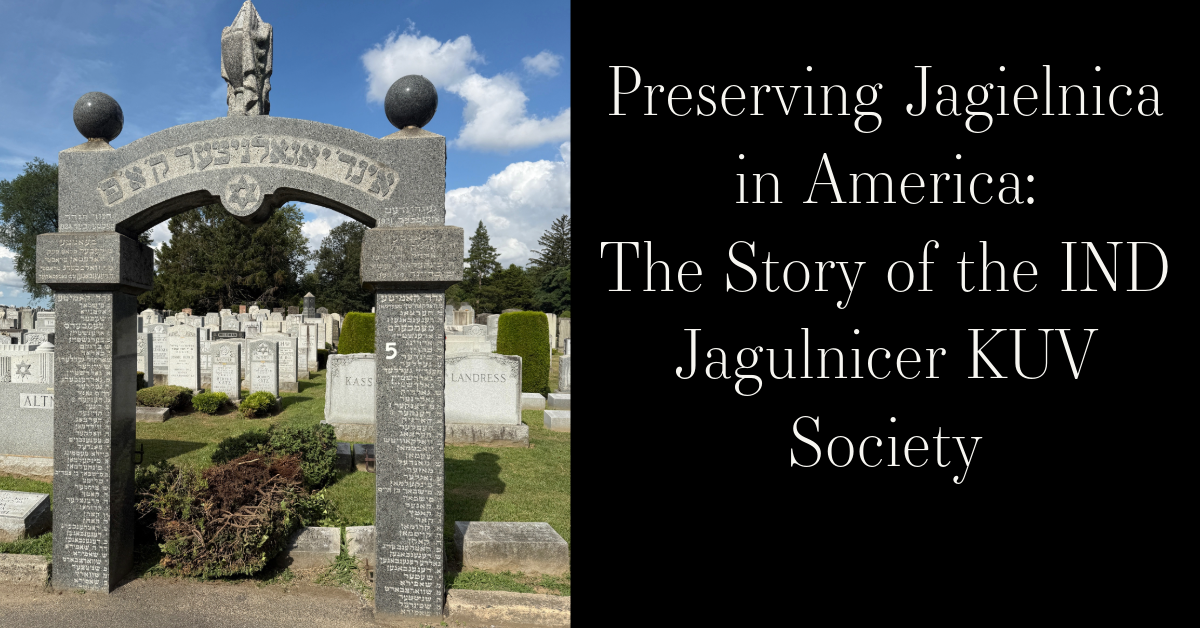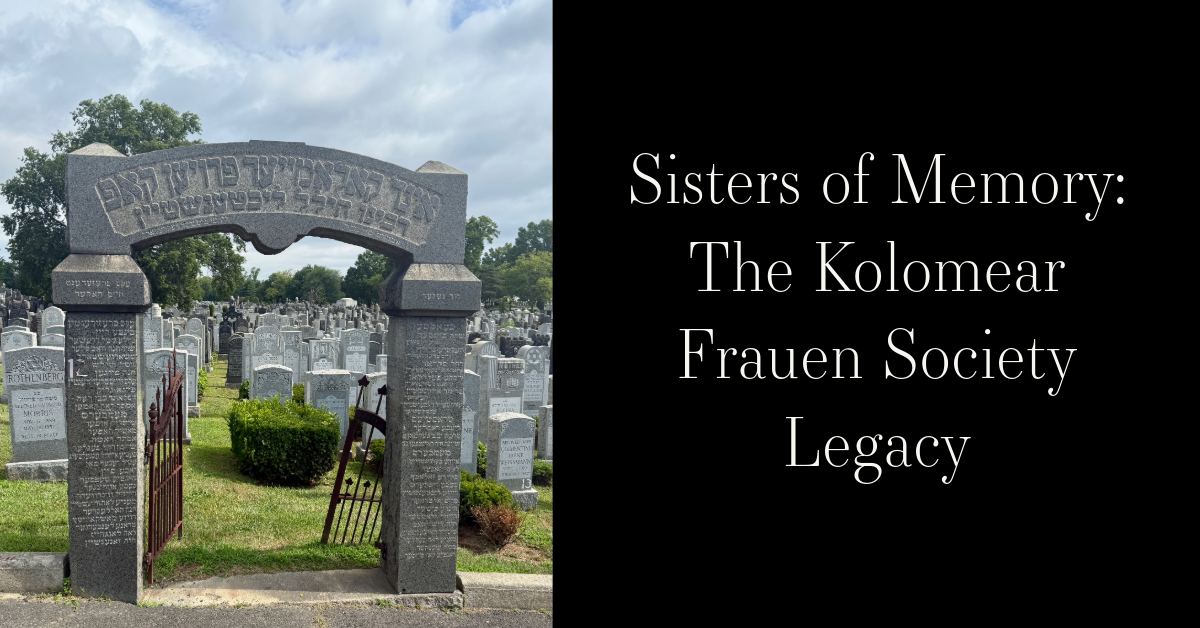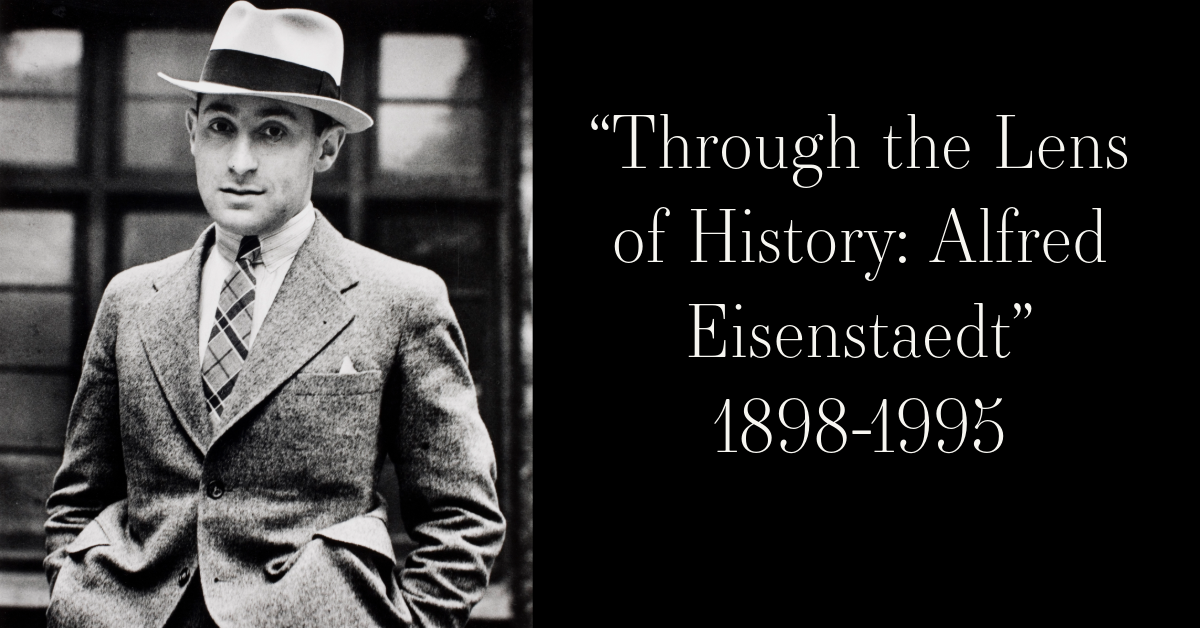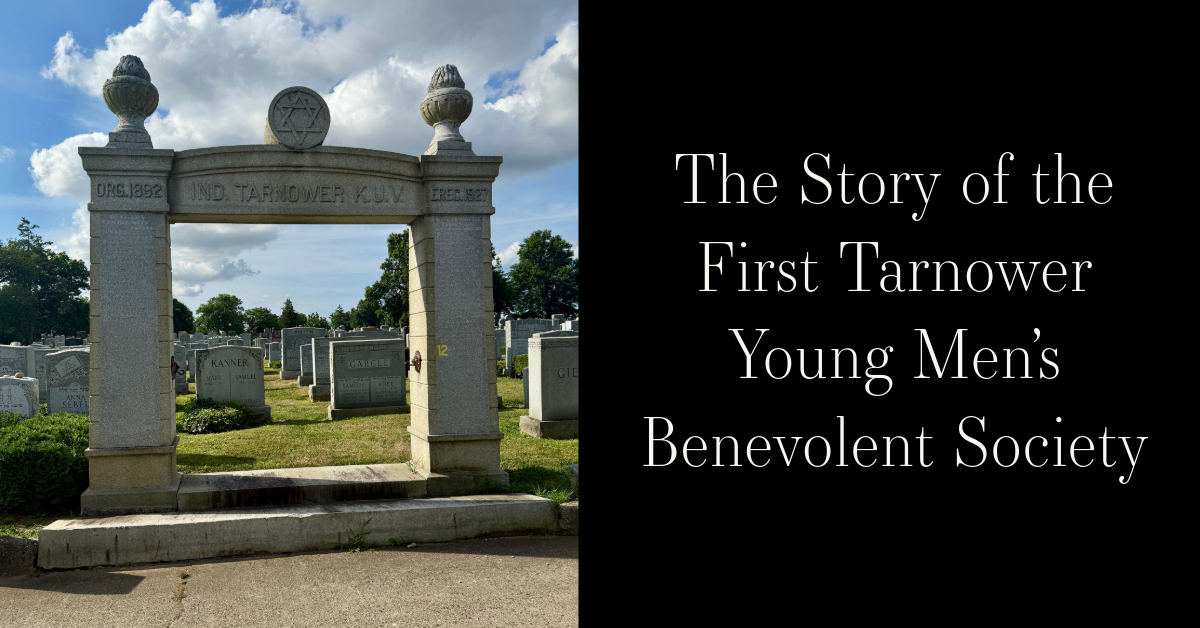Story Summary:
The Marmaros Benevolent Association was founded in 1917 by immigrants hailing from Marmaros (Sighet Marmaţiei), Romania. The society held charities and other social events. They have subsidized burial at Mount Hebron Cemetery. Initial Jewish presence in Sighet Marmaţiei dates to the 17th century. The Jews of Sighet Marmaţiei maintained Jewish schools, Yeshivot, a library, and a number of synagogues. Following the Hungary occupation in 1940, and the reoccupation of Hungary by German forces in 1944, the Jews were subjected to severe anti-semitic legislation and ghetto conditions. After the war, about 2000 Jews returned, but eventually migrated overseas. The Klaus Wijnitzer Synagogue, in addition to some other memorials, can be visited today. Their memories live on.~Blog by Olivia Scanlon
Marmaros Benevolent Association Blog
The Marmaros Benevolent Association was founded in 1917 by immigrants hailing from Marmaros (Sighet Marmaţiei), Romania. The society held charities and other social events. They have subsidized burial at Mount Hebron Cemetery.
Initial Jewish presence in Sighet Marmaţiei dates to the 17th century, with many having been refugees from the Russian/Ukraine pogroms of 1648-49. During the 20th century, the Jewish population had increased significantly, with there being almost 500 Jews in 1910 to almost 11,000 by 1941. The town became heavily influenced by the Hasidic movement of the 19th century. The town's first rabbi, Tseri Fisch was a follower of Hasidism, however, his successor, Yehudah Kahana was not. Hasidism was followed for the next three generations, until Hananyah Yom Tov Lipa Teitelbaum decided to join the Orthodox organization, which split the Sighet community, with part following Orthodox Judaism and the other branching off to Hasidic Judaism.
The community maintained a number of Jewish schools, yeshivot, libraries, and communal newspapers. The Jewish community of Sighet Marmaţiei was also heavily involved with the town’s Zionists organizations, including its youth population. Following the annexation of Transylvania by Hungary in 1940, the Jews of Sighet Marmaţiei were subjected to forced labor. In the Summer of 1941 about 20000 Jews from Sighet Marmaţiei and neighboring areas were deported to Kamenets-Podolsk. Hungarian anti-Jewish legislation was also enforced. German forces reoccupied the area in March of 1944, and relocated its Jewish population into the Sighet ghetto. The ghetto consisted of a “large” and “small” ghetto, holding 11,000 Jews and 3000 Jews respectively. In the ghetto, the Jewish population was forced to wear the yellow star, and were subjected to a curfew. Conditions of the ghetto were equally debilitating.
Deportations from the Sighet ghetto took place in a total of four stages. On May 17th 1944, the first stage, the liquidation of the small ghetto, occurred. May 18th, 19th, and 21st marked the liquidation of the large ghetto. In 1947, there were about 2300 Jews who had survived and returned, however, this number significantly decreased due to waves of migrations to Israel and/or the United States. By 1970, there were just over 200 Jews inhabiting the area. In 1989, there was a revival of Jewish heritage. The Klaus Wijitzer Synagogue is the only synagogue standing out of the twelve that existed. A memorial house can also be visited in memory of Elie Wiesel, a Sighet Marmaţiei author, professor, and survivor of the Holocaust. A separate memorial stands in memory of the Holocaust victims of Romania.
http://yivoarchives.org/index.php?p=collections/controlcard&id=34199
https://www.academia.edu/26649134/The_history_of_the_Jews_of_Marmaros_Hungary_Romania_Czechoslovakia_a_book_chapter
https://encyclopedia.yivo.org/article/940
https://encyclopedia.ushmm.org/content/en/article/sighet#:~:text=A%20significant%20Jewish%20population%20in,%25%20of%20the%20town's%20population).
https://jguideeurope.org/en/region/romania/transylvania/sighet-marmatiei/
https://jbat.lbi.org/locality/sighet-marmatiei
https://www.jewishgen.org/yizkor/maramures/mar003.html
~Blog by Olvia Scanlon


